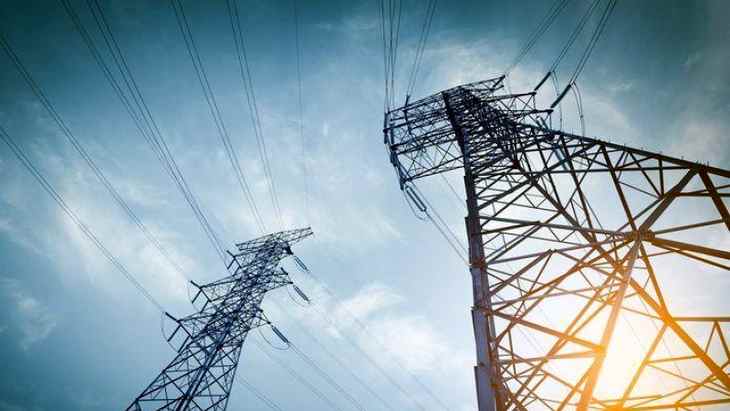We have once again, already in force, an emergency ordinance that turns the energy industry in Romania upside down and that risks to “significantly accelerate the collapse of the sector” (Mihai-Ionuț Vilt, Facebook). We list below, with minimal explanations, the three main problems of this normative act.
Arbitrary
None of the people we spoke to has an explanation for the level of 1,300 lei per MWh at which the maximum ceiling for the price of electricity was imposed by the state for settlement. It is “out of touch with market realities”, suppliers say. Not only because prices are currently much higher, but also because the degree of subcontracting is very high. An important share of the electricity volumes needed to cover consumption is yet to be contracted. Obliged by law to sell to consumers at a capped price, suppliers who would buy at a price over 1,300 lei per MWh would directly incur a loss. ACUE talks about “the significant deterioration of the financial situation of economic operators in the area of energy supply and distribution, as it imposes significant financial and economic losses on them, not recognized by the method of reimbursement or in the distribution tariff”. As the suppliers fail to cover the electricity needs of the customers in the portfolio, they will be transferred to the suppliers of last resort, who in turn will have the same problem. “With all responsibility, we feel obliged to draw attention to the risk that, in the very likely situation in which some electricity suppliers will end up unable to fulfil their public service obligations, the specific last-resort supplier mechanisms will no longer function effectively and efficiently. Taking over a very large portfolio of customers by the other designated operators will not be possible, given the precarious financial situation of all energy suppliers and the fact that the lack of liquidity will not allow additional purchases of electricity, at current market prices wholesale”, claim ACUE officials.
Another example of an arbitrary measure is the determination of the contribution to the Energy Transition Fund for the export activity by reference to the prices in the day-ahead market (DAM). According to the calculation method, the state will collect the difference between the DAM price from the day before the export sale transaction and the purchase price in Romania. Reporting to DAM is unfortunate, given that exports are made based on capacity reservation, agreed and paid for at prices agreed upon long before the actual delivery. A de facto trade barrier for exports is thus established, for situations where the price in the trader’s contract with the external client is below the DAM price because the export of electricity becomes unprofitable as an effect of the law.
Finally, a final example of an arbitrary measure is the imposition of a 2% profit cap on supply activity, with any additional earnings to be taxed at 100%. The laconic way in which it is presented in the GEO text does not allow the impact of this limit to be assessed with any degree of certainty. This is why comments such as that of Mihai-Ionuț Vilt appeared: “The operating margin of 2% is significantly below the cost of financing, therefore, all banks will withdraw their money from all suppliers and probably the multinationals will decapitalize local subsidiaries”. Other actors in the market complain that “the 2% formula does not cover all the suppliers’ costs, including transaction costs and the contribution to ANRE”, and “the monthly calculation ignores the losses inevitably recorded on some intervals, as a direct result of some of the contracting instruments existing on the market”. In addition, “profiling and balancing should be excluded from the application of these measures, as they induce losses that cannot be recovered by suppliers”.
Approach
Some clarification is likely to come in the coming weeks, but the untimely approach is hurting the industry and has already been flagged as such by trade associations. “We regret the lack of genuine communication and consultation with the representatives of the energy industry, both the business environment and the associative environment”, said CRE, in a press release. For its part, ACUE “makes a new call for responsibility and for a genuine collaboration between authorities and industry for the joint analysis of data and the assumption of correct decisions”.
In an immediate reaction published on Facebook, the former Minister of Energy Răzvan Nicolescu observed that it would have been more appropriate for the Bucharest authorities to wait a few days to see what the “proposals for reforming the European energy market” are, before adopting measures “without real consultation of public opinion and interested parties”. In Răzvan Nicolescu’s opinion, Romania is disconnecting from the European Union, adopting measures that violate European regulations, “in a strange way, without stating the objectives of the measures and their impact”.
Attitude
In the press conference after the Government meeting in which GEO 119/2022 was adopted, the Minister of Energy and the Minister of Public Finance answered the first questions posed by journalists. Both officials insisted on labeling as a contribution what is obviously a tax – one that was already announced by Minister Virgil Popescu in the previous days: “We are thinking a lot about a taxation of the entire chain: production, intermediation and supply”, said the minister, on August 24. The Energy Transition Fund received a name that it could possibly deserve only after the suspension of compensation and capping measures, since for the foreseeable future the amounts collected in this fund, through the newly established tax, will be used to reduce the financial pressure on the state budget.
Strictly speaking, none of the above issues is reprehensible; it is the right of the state to impose what taxes it deems fit and to establish any type of Fund. It is regrettable, however, this tendency of double language or even newspeak (as in G. Orwell), which uses speech in a try to impose a reality different from the actual one.
In the same line is the authorities’ tendency to victimize themselves: Minister Virgil Popescu spoke of “group interests” and “attacks” attributed to “speculators in the market who see their earnings threatened”. For his part, Rareș Bogdan, first vice-president of PNL, stated on Digi24 TV, that “the gentlemen from ANRE are currently undermining the Romanian state and the authority of the Government, the Prime Minister and no less than 5 ministers who signed this ordinance”. It is worth mentioning that GEO 119/2022 was also signed by the president of ANRE, Dumitru Chiriță, even though, according to G4Media, the National Energy Regulatory Authority warned the government that the ordinance flagrantly violates European rules because it limits EU trade in energy.
Finally, even after the journalists’ insistence, the two ministers avoided clarifying what the “successive sale” formula refers to in the newly adopted ordinance. In the text, this is described as “the successive sale of quantities of electricity or natural gas by traders and/or suppliers with trading activities, with the clear purpose of increasing the price” and “is sanctioned by ANRE with a fine of 5% of turnover”. A provision of such importance deserved more clarification right from the source, even if the final responsibility for the definition and identification of those subject to a fine rests with the regulator. For now, it seems an impossible task to apply, but it can lead to the restriction of transactions in the energy market during a turbulent period when maximum flexibility is needed.

